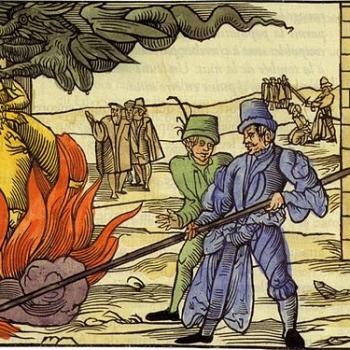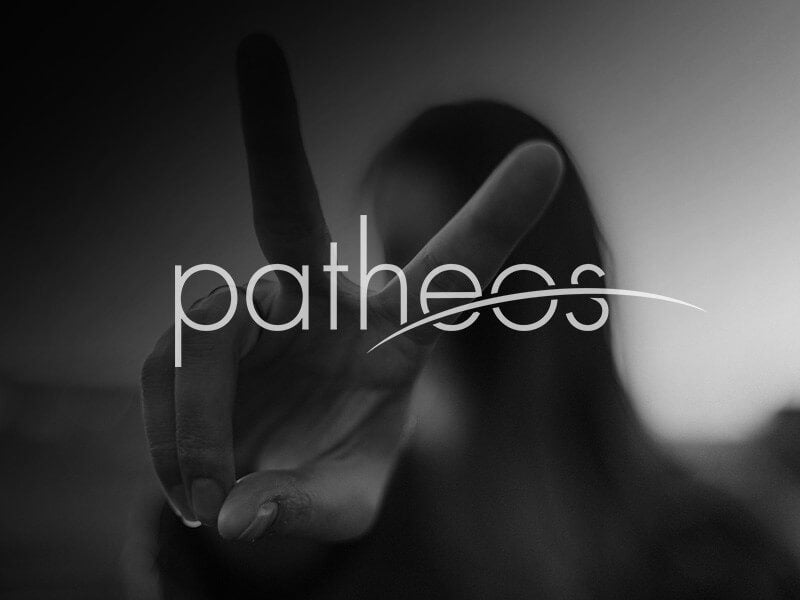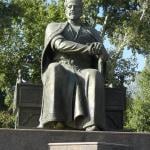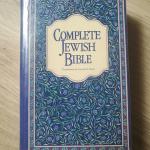 As some of you know, an ongoing interest of mine is the question of the relationship between the Old Testament and the New Testament. Steve Moyise and Maarten Menken have been editing a series of books on how NT authors use certain Old Testament texts. The series began with Psalms (2004, T & T Clark), and then, Isaiah in the New Testament (2005, T & T Clark). We now have Deuteronomy in the New Testament (2007; T & T Clark). These edited volumes follow the pattern of studying OT books according to their importance in the NT as demonstrated in the frequency of quotations and allusions.
As some of you know, an ongoing interest of mine is the question of the relationship between the Old Testament and the New Testament. Steve Moyise and Maarten Menken have been editing a series of books on how NT authors use certain Old Testament texts. The series began with Psalms (2004, T & T Clark), and then, Isaiah in the New Testament (2005, T & T Clark). We now have Deuteronomy in the New Testament (2007; T & T Clark). These edited volumes follow the pattern of studying OT books according to their importance in the NT as demonstrated in the frequency of quotations and allusions.
In the Deuteronomy volume, we see a very fine cast of scholars thinking together about the use of Deut. in the NT. Notably, we see contributions by Steve Moyise (Mark), Maarten Menken (Matthew), Michael Labahn (John), Roy Ciampa (Galatians and Romans), Brian S. Rosner (1 and 2 Corinthians), and Gert Steyn (Hebrews). As we move down the frequency list (Psalms, to Isaiah, to Deut. and so on), it becomes harder and harder to analyze the whole NT from this perspective as fewer and fewer citations/allusions are detected. Thus, we see a noticeable absence of reflection on, for instance, Ephesians and Colossians, and most of the General Epistles.
I will not examine the book chapter by chapter because, frankly, the details of the chapters are primarily descriptive and only really interesting to someone who is studying the subject in depth. My interest in the book is more in terms of why Deuteronomy is so frequently referred to, not just how it is. In Timothy Lim’s chapter on the use of Deut. in early Judaism, he points to the notion that its popularity probably comes from its use in liturgy (see esp. 15). In favor of this, he also mentions the Jewish practice of carrying phylacteries and ‘mezuzot’ which would have included texts such as ‘Deut. 6.8; 11.8). And, Lim notes that the Decalogue also appeared often in such liturgical texts.
What about the NT? M. Labahn argues that Deut. was of interest to John (the Evangelist) because of motifs that easily derive from it such as Love of God and Care for God’s Commandments. One cannot ignore, either, how important for Jewish messianic expectations, to hope of the ‘Prophet to Come’.
In Romans and Galatians, R. Ciampa gives a exegetically rich intertextual investigation and his concluding statements are particularly insightful. He eschews Francis Watson’s approach to Paul and the OT. Ciampa, instead of seeing two opposing voices in Deut., takes a more covenantal approach as reconfigured in terms of the cross. Thus, he responds to Watson as such: ‘If we grant that Paul perceives that Christ’s coming has brought about the transition from curse to blessing that was anticipated in Deuteronomy 30 in a surprising way, it opens up the possibility that Paul views some texts as reflecting divine guidance and instruction for the situation in which Paul’s readers find themselves as believers in Christ.’ (116). I think Ciampa is on to something, but the challenge is to determine which texts are which!
Ciampa’s covenantal perspective on Paul’s Christology and soteriology suggests that ‘in Paul’s view God has fulfilled the theological programme of Deuteronomy 30 through Christ himself, and that has brought about significant implications for understanding how the realities of curse and blessing, death and life, disobedience and obedience, sin and righteousness are conceived in light of the good news of Christ’s achievement’ (117).
Though I won’t go into detail, Brian Rosner’s work on 1-2 Corinthians in this volume is equally cogent. He would probably agree with Ciampa’s covenantal approach, but his perspective on the Corinthian Correspondence highlights more Exodus and Passover themes that come from Deut.
Whenever I review books that consist of multiple-contributors, I am disappointed when there is no concluding chapter. Such a chapter is needed, I think, to give coherence to the whole book. This Deut. volume (as the others) lacks such a post-work reflection. In a final chapter we hope to see the commonalities in the various approaches, wider themes that emerge, significance dissonance among the chapters, and perspectives for the future.
Nevertheless, I am collecting the whole set of these books as they are excellent specimens of how to approach the Old in the New in a sophisticated way which considers the early reception history, the vorlage, important literary questions regarding the nature of intertextuality, and also hermeneutic principles and approaches appropriated by the NT authors. I am quite sure that another volume on the minor prophets is in the works. I eagerly look forward to it.
NB: In the introduction to this Deut. volume, Moyise makes the caveat that this study could not do an in-depth look at the Decalogue in the NT. Even though the contributors did touch on this as relevant, this is still a study waiting to happen. Future doctoral students should keep this in mind.
Nijay















